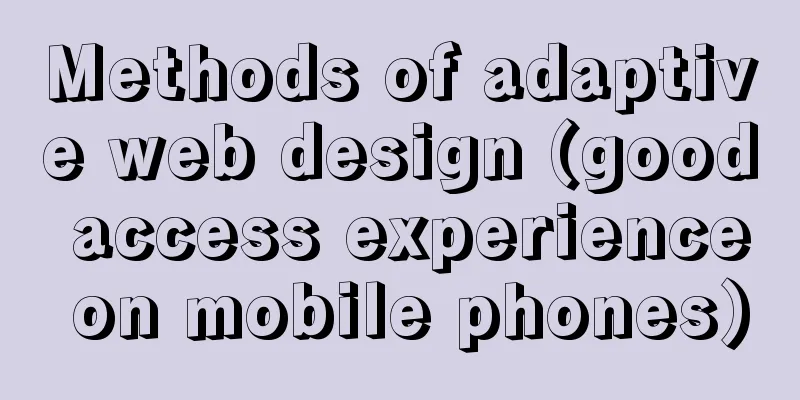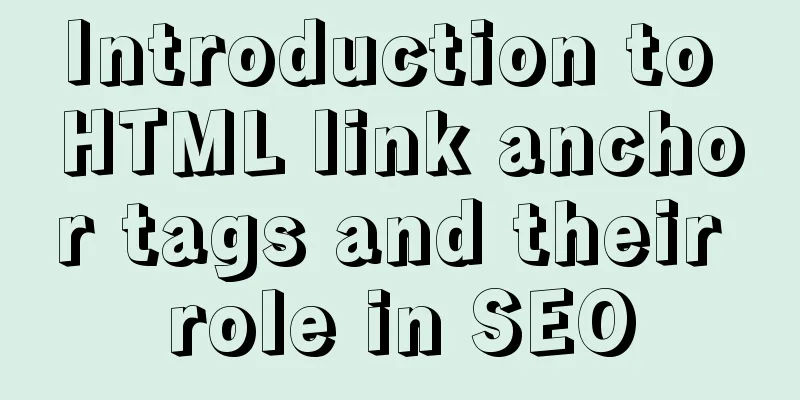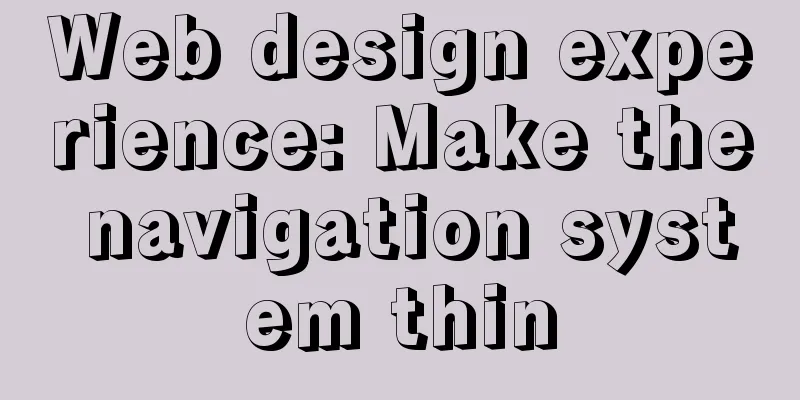Methods of adaptive web design (good access experience on mobile phones)

|
1. Add the viewport tag to the HTML header. Copy code The code is as follows:<meta name="viewport" content="width=device-width, initial-scale=1" /> This code supports Chrome, Firefox, and IE9 and above, but does not support IE8 and browsers lower than IE8. 2. Add rules for different screen resolutions at the end of the CSS file. For example, using the following code, you can hide the sidebar of the web page and automatically adjust the width of the middle content bar on devices with a screen width less than 480 pixels (such as iPhone, etc.). The following code is for Z-Blog, and the WordPress related tag names only need to be modified. Copy code The code is as follows:@media screen and (max-device-width: 480px) { #divMain{ float: none; width:auto; } #divSidebar { display:none; } } 3. Use relative width for layout width. The overall frame of the web page can use absolute width, but the content frame and sidebar below are better to use relative width, so that it is convenient to modify for different resolutions. Of course, you can also use relative widths, in which case you will need to add the width of each div for small screens in @media screen and (max-device-width: 480px), which is actually more troublesome. 4. Use relative fonts on the page Do not use absolute fonts (px) on HTML pages, but use relative fonts (em). For most browsers, em = px/16 is usually used, for example 16px is equal to 1em. Based on the points mentioned above, I made some changes to the CSS of my blog and found that I can browse the page with a better experience from an iPhone. However, there is one problem that has not been solved, that is, there is a problem with the display of the top navigation bar navbar. After the line break, it is covered by the article below. I don’t know how to better solve this problem (Update: according to the tips of netizens, adding overflow:hidden; in the style of the navigation bar divNavbar can solve this problem). The picture below was accessed using an iPhone. After modifying the CSS to make the Moonlight Blog homepage an adaptive web page, it looks much better than the original unoptimized page. In short, if you make modifications according to the above four steps, you can easily modify a website into a page suitable for browsing on multiple devices. This is indeed a good thing for users who access the website through mobile phones. The following is more detailed supplementary information: With the popularization of 3G, more and more people use mobile phones to access the Internet. Mobile devices are surpassing desktop devices as the most common terminal for accessing the Internet. Therefore, web designers have to face a difficult problem: how to present the same web page on devices of different sizes?
The screen of a mobile phone is relatively small, with a width usually below 600 pixels; the screen width of a PC is generally above 1000 pixels (the current mainstream width is 1366×768), and some even reach 2000 pixels. It is not easy to present the same content in a satisfactory way on screens of different sizes. The solution for many websites is to provide different web pages for different devices, such as providing a mobile version or iPhone/iPad version. This certainly ensures the effect, but it is more troublesome and requires maintaining several versions. Moreover, if a website has multiple portals, it will greatly increase the complexity of the architecture design. Therefore, some people have long imagined whether it is possible to "design once and apply it to all", so that the same web page can automatically adapt to screens of different sizes and automatically adjust the layout according to the screen width?
1. The concept of "adaptive web design" In 2010, Ethan Marcotte proposed the term "Responsive Web Design", which refers to web design that can automatically identify screen width and make corresponding adjustments. He created a sample with the portraits of the six main characters from The Adventures of Sherlock Holmes. If the screen width is greater than 1300 pixels, the 6 images are arranged in a row.
If the screen width is between 600px and 1300px, the 6 images are divided into two rows.
If the screen width is between 400px and 600px, the navigation bar moves to the header of the web page.
If the screen width is under 400 pixels, the 6 images are divided into three rows.
There are more examples of this on mediaqueri.es. There is also a test tool here that can display the test results of screens with different resolutions on a single web page. I recommend installing it. 2. Allow the webpage width to adjust automatically How does "adaptive web design" work? It’s actually not that difficult. First, add a line of viewport meta tag to the head of the web page code.
viewport is the default width and height of the web page. The above line of code means that the web page width is equal to the screen width (width=device-width) by default, and the original scaling ratio (initial-scale=1) is 1.0, that is, the initial size of the web page occupies 100% of the screen area. All major browsers support this setting, including IE9. For those older browsers (mainly IE6, 7, 8), you need to use css3-mediaqueries.js.
3. Don’t use absolute width Since the web page will adjust its layout according to the screen width, you cannot use an absolute width layout or elements with absolute width. This one is very important. Specifically, CSS code cannot specify pixel widths:
Only percentage widths can be specified:
or
4. Relative font size Fonts cannot be sized in absolute (px) sizes, only in relative (em) sizes.
The code above specifies that the font size is 100% of the default size of the page, which is 16 pixels.
The h1 is then sized 1.5 times the default size, which is 24 pixels (24/16=1.5).
The size of the small element is 0.875 times the default size, which is 14 pixels (14/16=0.875). 5. Fluid grid "Fluid layout" means that the positions of each block are floating, not fixed.
The advantage of float is that if the width is too small to accommodate two elements, the latter element will automatically scroll to the bottom of the former element and will not overflow horizontally, thus avoiding the appearance of a horizontal scroll bar. In addition, you must be very careful when using absolute positioning (position: absolute). 6. Choose to load CSS The core of "adaptive web design" is the Media Query module introduced by CSS3. What it means is that it automatically detects the screen width and then loads the corresponding CSS file.
The above code means that if the screen width is less than 400 pixels (max-device-width: 400px), load the tinyScreen.css file.
If the screen width is between 400px and 600px, the smallScreen.css file is loaded. In addition to loading CSS files using HTML tags, you can also load them in existing CSS files.
7. CSS @media rules In the same CSS file, you can also choose to apply different CSS rules according to different screen resolutions.
The above code means that if the screen width is less than 400 pixels, the column block will be unfloated (float:none), the width will be automatically adjusted (width:auto), and the sidebar block will not be displayed (display:none). 8. Image Adaptation (fluid image) In addition to layout and text, "responsive web design" must also achieve automatic scaling of images. This only takes one line of CSS:
This line of code also works for most videos embedded in web pages, so it can be written as:
Older versions of IE do not support max-width, so you have to write:
In addition, when scaling images on the Windows platform, image distortion may occur. At this time, you can try to use IE's proprietary command:
Alternatively, imgSizer.js by Ethan Marcotte.
However, if conditions permit, it is best to load images of different resolutions according to screen sizes. There are many ways to do this, both on the server and client side. |
<<: Detailed explanation of Linux command unzip
>>: What are the benefits of semantic HTML structure?
Recommend
Do you know how to use Vue to take screenshots of web pages?
Table of contents 1. Install html2Canvas 2. Intro...
Two special values in CSS are used to control the inherit and initial methods of the cascade
There are two special values that can be assign...
Web page printing thin line table + page printing ultimate strategy
When I was printing for a client recently, he aske...
iframe parameters with instructions and examples
<iframe src=”test.jsp” width=”100″ height=”50″...
Nginx implements https website configuration code example
https base port 443. It is used for something cal...
Detailed usage of MYSQL row_number() and over() functions
Syntax format: row_number() over(partition by gro...
Vue uses mixins to optimize components
Table of contents Mixins implementation Hook func...
JavaScript to show and hide the drop-down menu
This article shares the specific code for JavaScr...
Implementation of 2D and 3D transformation in CSS3
CSS3 implements 2D plane transformation and visua...
How to install Odoo12 development environment on Windows 10
Preface Since many friends say they don’t have Ma...
CentOS6.8 uses cmake to install MySQL5.7.18
Referring to the online information, I used cmake...
Explanation of the problem that JavaScript strict mode does not support octal
Regarding the issue that JavaScript strict mode d...
How to use native JS to implement touch sliding monitoring events
Preface I wrote a small demo today. There is a pa...
Understand all aspects of HTTP Headers with pictures and text
What are HTTP Headers HTTP is an abbreviation of ...
Use the sed command to modify the kv configuration file in Linux
sed is a character stream editor under Unix, that...















